It was a cup of coffee that fixed my issues with upland birds and waterfowl feathers. Cal Bird had a taste for strong brew and the shop’s pot was always bubbling ..
I was usually the first person at the store and figured that if one of those neatly trimmed Styrofoam cups made the brownish “ick” we drank yesterday, three or four of them should make real coffee, the kind that explodes a sleepy employee into a dynamo…
… like Popeye and spinach, only warmer.
Cal would show on Saturdays with a wreath cake and watch me struggling with some small bit of dander, and in between my fits of childlike petulance would show me the better way of doing things.
Cal was inordinately fond of upland birds and waterfowl as they possessed the most desirable color schemes and mottle effects, yet Mother Nature never saw fit to size them to suit our needs. All the best markings and coloration tend to be on the larger flank feathers which are much too long for small flies. Breast feathers are smaller, but small being synonymous with fragile – and markings are much lighter and can be indistinct.
I’d be struggling trying to fit a #6 partridge hackle on a #14 hook, with him smiling and offering encouragement, and as I mangled the feather into a semblance of functionality he’d point out how I could do so with less cursing. Part and parcel of the Consummate Gentleman, as he always had a kind word for everyone.
On one such Saturday he showed me what he called a “distribution wrap” – making no claim to its invention, but making my use of upland birds and waterfowl feathers much less formidable…
Single Segment: If you’ve got a feather with only a single side that has roughly equal length, you can trim that segment from the feather to make your hackle.
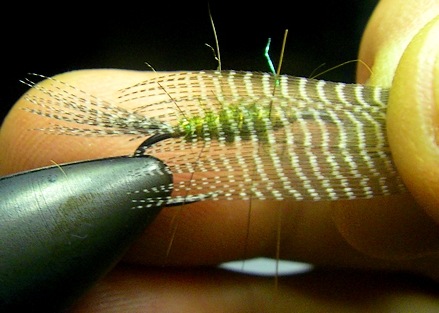
Just measure the length you want the body hackle and press the segment against the hook shank with your left thumb. See below.
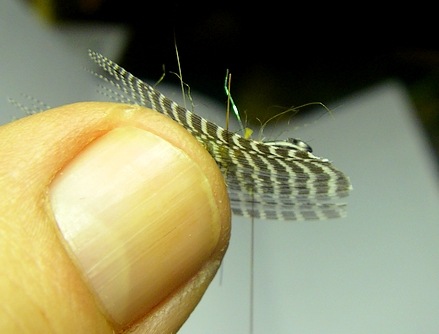
The thread will be our instrument to move the fibers around the shank. We’ve a tenuous hold on them and will allow the thread to take them completely around the shank. If we using the three-turn anchor, we can wrap those turns loosely, and position fibers to cover the bare spots before securing the material tightly.
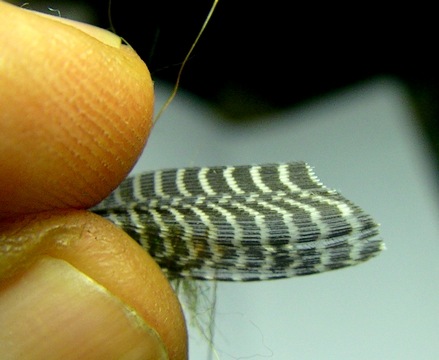
I’ve dropped the forefinger on the top to start the material curling around the shank. Take a slow loose turn with the thread to complete.
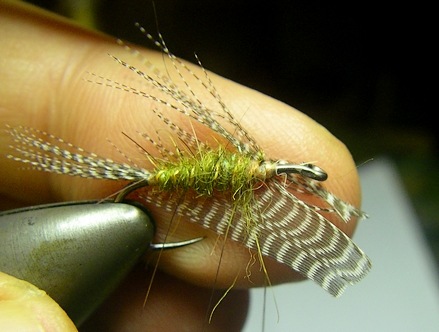
The thread has trapped fibers at the top and is moving around the far side to populate the hackle. My fingers are there only to stop the motion and hold everything for the camera.
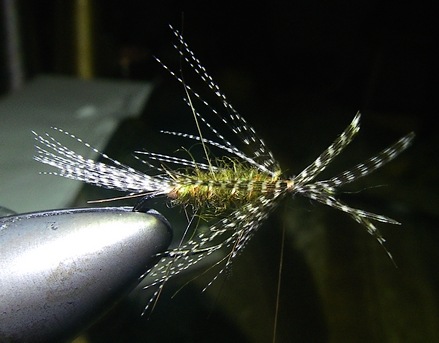
Once the fibers are mounted and anchored, if you take additional slow turns in the direction of the body, you can redistribute the hackle with each turn. Once the coverage is to your liking, wind only toward the eye.

After taking additional wraps towards the body (and redistributing the material) I have the hackle to my liking. Now I’ll dub the thorax and finish the fly.
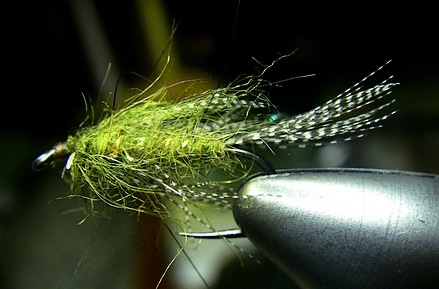
The finished teal hackle. Mother Nature doesn’t always assist us with small hackles, sometimes we have to get “medieval” on the raw materials to yield what’s useful.
This same technique can be used on most upland bird hackles and all species of waterfowl, but a lot also depends on the kind of hackle you’re attempting. The above fly has the luxury of a dubbed head which hides all my thread. I’d be much more precise with my thread if the hackle was the last thing on the fly.
Tags: Cal Bird, distribution wrap, teal hackle, soft hackle, strong coffee, wreath cake, fly tying, fly tying materials, teal flank

Every once in a while you hit a home run. Nice article and very timely as I’m working with green wing teal, wood duck and cinnamon teal right now.
Could say a lot more but I have to start tying while my heads in it.
thanks
Monty Montana
Monty, If you’d like I could show you a second method useful on those feathers. I’m happy to accomodate – as Cal was a treasure trove of information on this phenomena.
Kieth,
Really appreciate the techniques and sharing insight about Cal. I communicated with him by mail after having him sign my art of the trout fly. He was very gracious and sent me several flies along with his letters. Just wish I could have met him in person.
Thanks,
Bill
Excellent post. I’ve tried many methods for accomplishing this sort of thing, and this is far and away better than everything I’ve tried!
spencer
Chuck once sold to me three flies tied by Cal. I was young and poor then (still poor), so I ended up fishing with them instead of saving. All I can say is the flies worked.
great photos, that really shows the steps clearly, i think i could do this with the right tools.
Pingback: The Post-Solstice Fly Fishermen (or, A Short Essay Designed to Prevent Madness) - Fly Fishing Gear
I agree. Great post.This is an ingenious and obvious use of thread torque on hackle. If it was easy, then everybody would do it. But no, we try to do it right.
Pingback: The Post-Solstice Fly Fishermen (or, A Short Essay Designed to Prevent Madness) | The Trout Underground Fly Fishing Blog